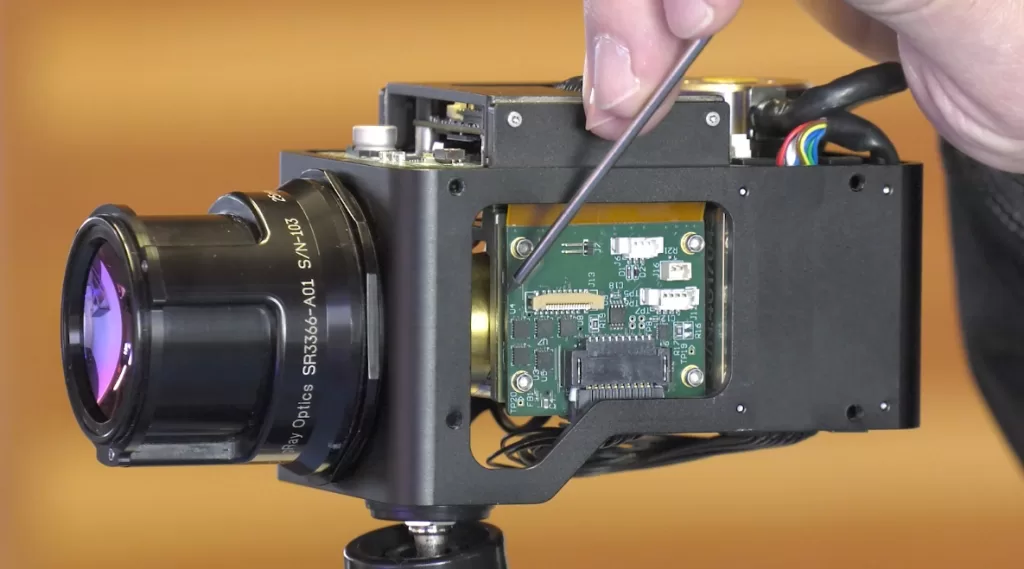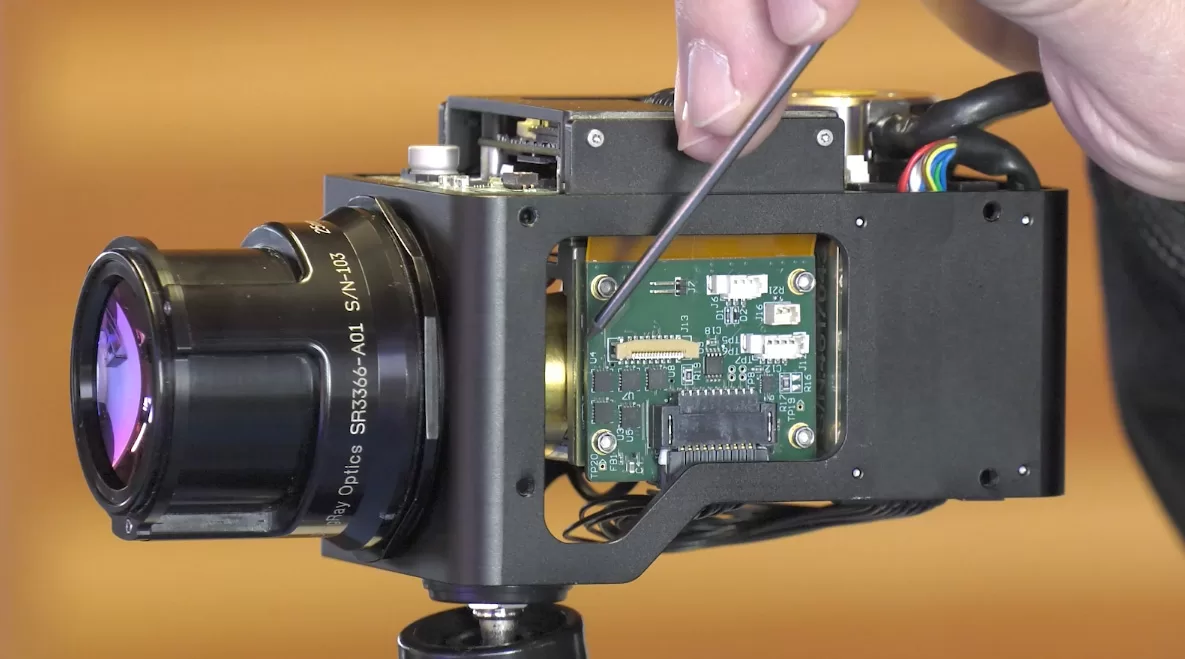Welcome back to Tech Talk, where we discuss thermal imaging cameras, the science, the technology, the engineering behind them, how we design and produce them here at Sierra-Olympia Technologies. And this series gives you a way to learn more about the details of thermal imaging. I’m Stan Voynick, Chief Technology Officer, and today I’m going to be talking about mid wave and long wave thermal cameras.
The Simple MWIR and LWIR Science
What are the differences between them where they’re used? Some of the considerations in choosing which one to use for a particular thermal imaging application. Let’s get right into the science. Long-wave, mid-wave, what does that mean? The atmosphere that we live and work in absorbs certain parts of the infrared spectrum, and it has certain windows where it doesn’t absorb. The two windows that we work in are the mid wave from 3 to 5 microns and the long wave from 8 to 12 microns. Between those in the 5 to 8 Micron region, the atmosphere absorbs almost completely infrared radiation, mostly because of the water vapor absorption spectrum. But on either side of that water vapor absorption band, we’ve got the mid wave and the 3 to 5 micron and the long wave and the 8 to 12 micron. So that’s really what has driven the development of these two infrared imaging technologies.
Midwave Coolers
In the case of midway sensors, the materials that are used here typically require cooling off into really cold temperatures. Cryogenic temperatures. In the old days, we used to have these things called dewars that we would pour liquid nitrogen into, which would cool the sensors to 77 Kelvin. Over time, the industry transitioned to the use of coolers. This is a cooler that actually has the same elements as a refrigerator in your kitchen. It has a working fluid inside, compresses that fluid, takes the heat out of it, moves the fluid over to near the detector, and then lets the fluid expand so that it takes the heat out of the detector and cools it.
Some of these coolers can go as cold as those old liquid nitrogen systems we used, 77 Kelvin. The more modern coolers that we use, similar cooler to this is inside this camera (figure 1) operate at higher temperatures, 150 Kelvin. That’s still very cold, but these coolers don’t have to work as hard as the old 77 Kelvin coolers, and so they typically have longer lives.

Given the size, the complexity, the moving parts, then why would you even consider using a mid wave system? Well, mid wave systems have the characteristic that they tend to be more sensitive, partly because they use that quantum characteristic of the detector, partly because since the detector is cooled, that also lowers noise in the system. Mid wave sensors can be exquisitely sensitive. By sensitive, I mean that they are good at detecting very small amounts of infrared radiation. This translates to an ability to see very small temperature differences in a scene for trying to distinguish something that is just a little bit warmer or a little bit cooler than something else in the scene. A sensitive detector, a mid-wave detector for example, would do a good job of bringing out that contrast in the scene.
Long-wave Sensors
Many mid wave sensors work on quantum principles, where the photons coming in knock off electrons and the quantum action that happens there needs the cold temperature in order for it to work correctly. In the case of long wave sensors, the ones that we sell here at Sierra-Olympia are microbolometers. In this case, the infrared energy comes in, simply warms up the detector, and then that change in temperature can be sensed by the electronic circuitry. This does not require the detector to be cooled. That’s why these can operate at room temperature. These can be packaged in something the size of a marshmallow and the includes the lens.
Application in MWIR and LWIR
If you were to go out and search on MWIR and LWIR, mid-wave IR and long-wave IR, you might come up with results that say MWIR vs LWIR as if there’s a winner between the two. It’s not one or the other. Each of them has its application in its wave band depending on the application that you are trying to fulfill.
You might have considerations where sensitivity is of the highest importance; in that case an MWIR system might be well-suited. You might have applications where size and weight is of the most importance, and a small, compact LWIR system might be the right one for that application.
New features and capabilities being introduced in MWIR and LWIR systems are enabling new applications all the time. Contact us to talk about your application and we’ll help guide you through the process of deciding which camera is the best one for you. Visit our website and our MWIR and LWIR product pages to see all our product line.

